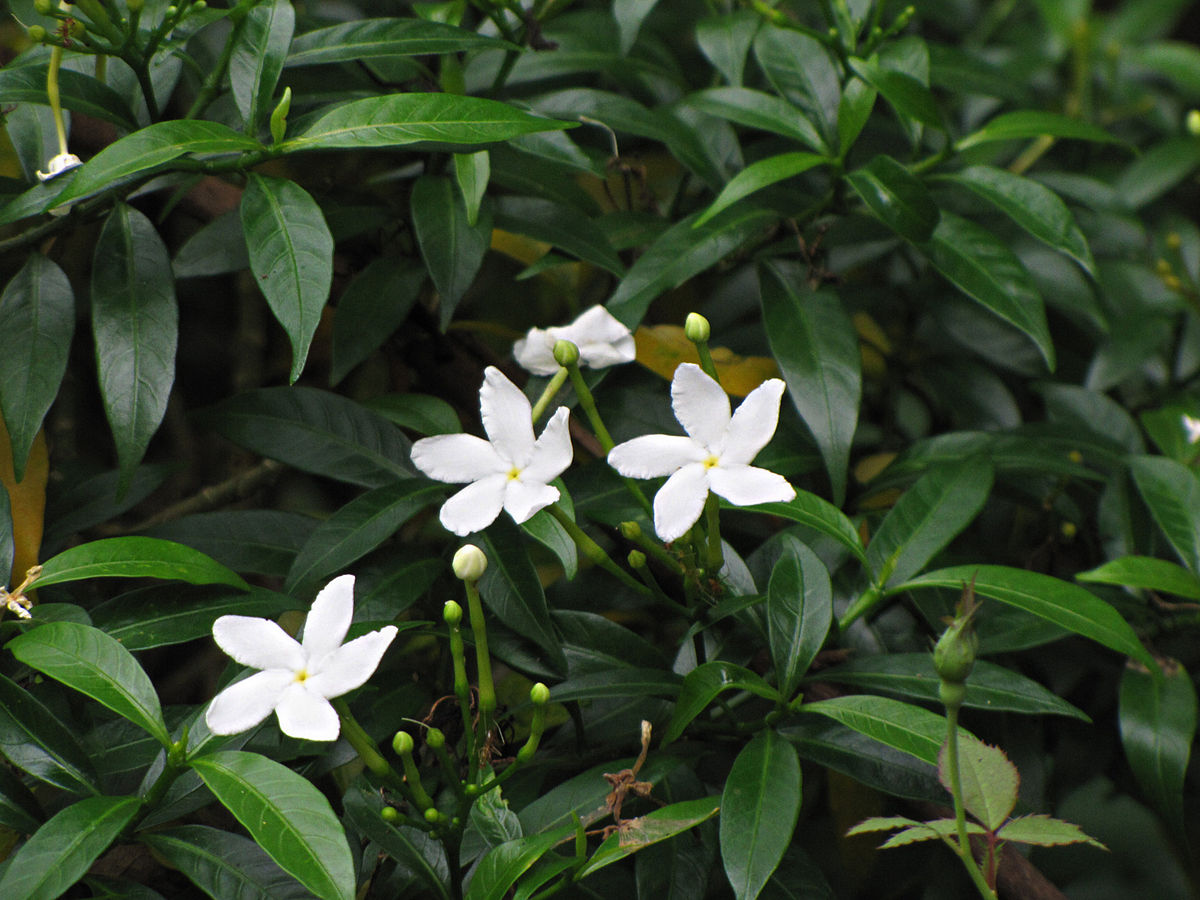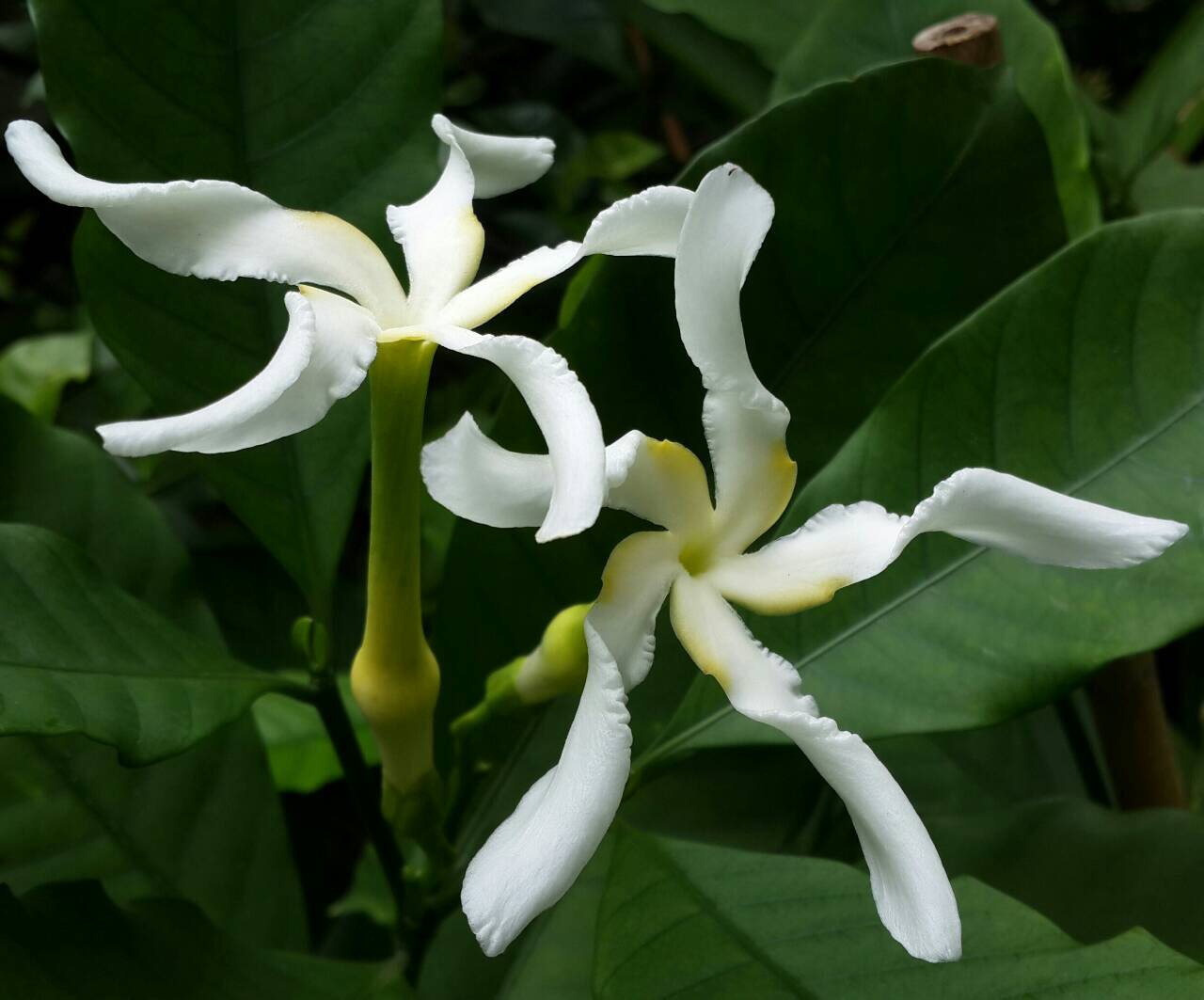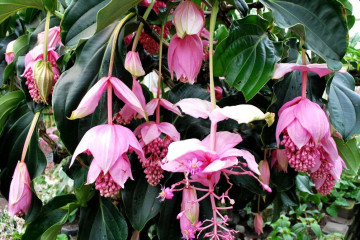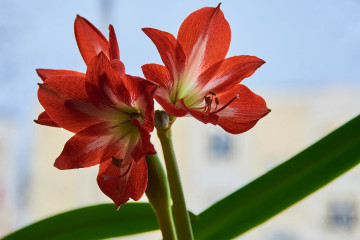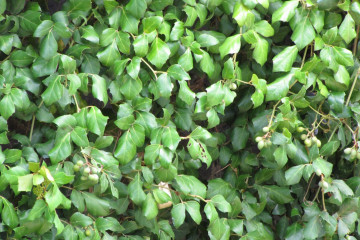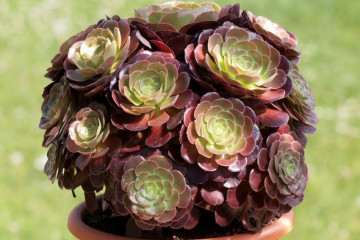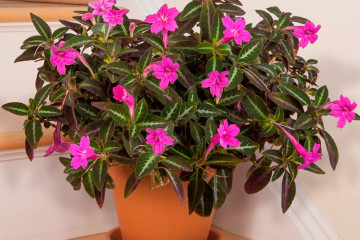Tabernemontana - home care
Content:
Tabernemontana does not require special care and can grow in unpretentious conditions. With these qualities, she acquired a large number of fans who were able to appreciate her. The plant has a beautiful appearance at any time of the year.
The origin of the plant
The name of the flower is very difficult to pronounce, but despite this drawback, flower growers are happy to acquire it. It resembles a gardenia to some, jasmine to others. Tabernemontana reed has nothing to do with any of these plants. The name was given to him in honor of Jacob Theodor Tabernemontanus.
The homeland of the flower is Central and South America, where locals call it "the flower of love". Over time, it began to spread throughout the world. The tree is most often grown indoors. In countries where the air is humid and warm, tabernemontana is an ornamental plant that grows in gardens. In America, pest control agents are made from parts of the shrub, added to drinks, and the fruits of certain varieties are eaten.
Descriptions
The indoor tabernemontana flower looks like a miniature tree or bush. The shoots and stem of the flower are woody. The flowers are white, with double edges on the petals. The buds bloom all year round, growing at the tops of the shoots.
The leaves grow up to 17 centimeters long and are elongated with a sharp end. On the stem, they are located opposite each other. The surface of the leaves is dense and slightly shiny.
Tabernemontana and gardenia: differences
Tabernemontana looks like the gardenia loved by everyone, so many people easily confuse them. To prevent this from happening, it is important to know how to distinguish between these flowers:
- In poor conditions, the gardenia will hurt, the leaves will turn yellow, fall off. At the same time, the tabernemontana will feel great, develop and smell sweet.
- The flowers of both plants have different shapes and a pleasant aroma, their leaves are significantly different. In gardenia, the tips are rounded, in tabernemontana, pointed.
Types and varieties of plants tabernemontana
In nature, there are more than a hundred varieties of tabernemontana, there are much fewer indoor varieties. Most often, the following are grown by amateurs.
Tabernaemontana divaricata
This variety is the most common among amateur flower growers. It differs in a crown shaped like a ball. Each branch is horizontal and ends with a brush of inflorescences of snow-white flowers.
Each bud has five petals topped with corrugated edges. The scent of tabernemontana is reminiscent of jasmine. After flowering, oblong fruit pods appear.
Tabernemontana elegant (Tabernaemontana elegans)
This variety is appreciated for its simplicity in care and beauty. The bush is branching, while much lower than the tabernemontana Divarikata. Flowers also have five petals, but they do not have double edges. This plant is famous for its winter hardiness, it can withstand a slight drop in temperature.
Tabernemontana crowned (Tabernaemontana coronaria)
The shrub is of medium height and leaves are embossed on the surface. At the end of each branch, inflorescences are formed with fifteen delicate flowers.
Tabernaemontana holstii
This species is very rare. The distinguishing feature is the flower petals, which are shaped like a propeller. Leaves are oval, somewhat elongated.
Tabernaemontana sananho
The variety is distinguished by long thirty-centimeter leaves. Flower petals are narrow, long, curled up. The fruits of the plant can be eaten.
Tabernemontana Amsonia
This type of plant has blue flowers, which significantly distinguishes it from other varieties. Amsonia tabernemontana is used as an ornamental shrub.
In addition, there are also popular varieties such as tabernemontana white star, terry and tabernemontana sp dwarf golden variegata. Tabernemontana variegated charms with its shape and flowering.
Transplanting a Tabernemontana plant into a pot
Transplanting a tabernemontana will not be difficult. The main condition for this procedure is compliance with all recommendations.
What is needed for landing
Before you start planting a plant in a pot, you need to prepare everything you need. The soil is required light, loose, which can easily pass water. The acidity should be in the range of 4.5-5.5. If you make the soil mixture yourself, then coniferous and deciduous soil, river sand, peat and humus are taken in equal proportions. In the process of caring for a flower, a little lemon juice is added to the ground once a month.
The choice of the pot is of great importance. It is best if it is deep and wide enough. In no case should you take a spherical product or narrowed in the middle. Drainage must be placed at the bottom of the pot to protect the root system from waterlogging.
Optimal location
In order for the tabernemontana to bloom and develop, you need to choose the right place where the pot will stand. Since the plant is completely undemanding, it can be placed on the windowsill or nearby. The length of daylight hours does not play a special role in flower development. Five to six hours of daylight is enough for him to bloom and smell of flowers.
If the sun illuminates it for as long as possible, then the flowering will be more abundant. Therefore, it is best to place the tabernemontana on a window on the east or west side. If the flower is on the south side, then at noon it is recommended to cover it from direct sunlight.
Step-by-step planting process
The plant requires two or three transplants per year as it grows and develops rapidly. In the process, it must be borne in mind that the root system, although powerful, is rather fragile. Therefore, it is recommended to transfer it from pot to pot along with an earthen lump. The new pot must be a little larger than the previous one and filled with a quarter of new drainage. The procedure should proceed as follows:
- a plant is taken out of an old vessel along with soil, which cannot be shaken off;
- the bush is placed in a new pot for drainage;
- the root system is covered with fertile soil;
- the plant after transplanting is lightly watered;
- add soil if necessary.
Plant propagation
The flower is propagated by cuttings or seeds.
Cuttings
For the process of reproduction of tabernemontana by cuttings, you will need to cut off a twig 10 centimeters long.The planting material must be cut with a sharp knife. Be sure to rinse the cut so that the vessels do not clog. The stalk is placed in warm water with activated carbon dissolved in it and covered with a bag. After a month, roots are formed.
Further, the process of formation of the root system is carried out. For this, the cutting is planted in a substrate made of peat and sand. After it becomes clear that the root system has completely covered the soil, the plant can be planted in a full pot.
Growing from seeds
The second way to grow a plant is preferred by botanists who are interested in what exactly can be obtained in the end. After all, it is known that with the seed method of reproduction, varietal characteristics are lost.
Home care
In order for the tabernemontana to feel great in the house, it will be enough to create the minimum suitable conditions for it:
- water on time;
- the room should be warm;
- the plant requires enough light.
If the tabernemontana flower is properly cared for at home, you can admire its flowering all year round.
It happens that the leaves of a plant begin to turn yellow. These are the first signs of the disease. Many will be interested in why this happens. The reason may be improper care of the bush: the soil is not suitable, or watering is not done correctly.
Watering mode
For the normal growth and development of tabernemontana, the correct watering regime is necessary. This procedure is done regularly, along with this there should be a little water. Water the flower twice a week in summer and once a week in winter.
Top dressing
In order for the shrub to bloom profusely, it is important to feed it. The plant is fed during the period from spring to autumn. In this case, there is an alternation of mineral fertilizers with organic ones.
During flowering
Tabernemontana can bloom for eight months. During this period, she needs a sufficient amount of nutrients and moisture. In addition, during the laying of buds, the plant is not recommended to be moved from place to place.
During the rest period
In order for the plant to rest during wintering from flowering and gain strength for the next season, it is less often watered and sprayed. The air temperature drops to 16 degrees. Be sure to remove the resulting buds.
Preparing for winter
Tabernemontana can also bloom in winter. To do this, you need to prepare suitable conditions for her. The temperature should be at around +18 degrees. To extend daylight hours, additional lighting is installed. Watering is done in the same way as in the summer.
All growers who have a tropical plant called Tabernemontana in their apartment are delighted with an unpretentious flower that can delight the eye with its flowering all year round. The main thing is not to forget to feed the tree, take care of it and moisten the soil in time.

